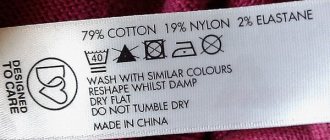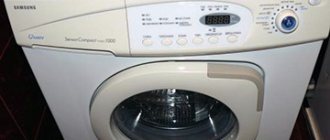Why do you need to clean your air conditioner?
Dust and dirt can cause the device to malfunction. In the instructions for any type of air conditioner you can find a clause about their mandatory periodic maintenance. Timely cleaning of the device prevents the appearance of unpleasant odors and noise during operation. Keeping your air conditioner clean can significantly extend its service life.
A device that is cleaned of dust and dirt does not spread bacteria and viruses that accumulate inside it throughout the living space. They can cause allergic reactions, cause respiratory diseases and asthma. Dirty air conditioners increase energy consumption, which can seriously affect the family budget.
Cleaning an air conditioner yourself requires knowledge of its design.
Features of cleaning a split system
When servicing the air conditioner, you need to take into account the features of specific systems:
- If the apartment is on the lower floors, then you need to pay extra attention to the external unit. In this situation, more dirt will fall on it from the street and will need to be cleaned more often. It is best to perform it at least once every three months.
- For rooms on the seventh floor or higher, exterior cleaning can be done no more than once every two years.
Cleaning the external unit requires considerable effort Source ch.ks.ua
- Regardless of the floor of residence, cleaning the inside of the air conditioner should be done approximately once a week. Regular maintenance will be cheaper compared to the cost of repairing or replacing components.
- During the winter period, it is necessary to pay special attention to the serviceability of the device, especially its external part. Icicles may form in it, which can cause the device to break down.
Sometimes forced ventilation using filters is used to supply air to the air conditioner. In this case, much less contamination occurs and you will have to think about how to clean the air conditioner much less often. In such a situation, all the dust and dirt will settle on the filters, which will need to be changed periodically.
Flushing the air conditioner Source kazan.myguru.ru
Signs of a dirty air conditioner
The device gives a person various signals about the need for cleaning, which can be easily recognized. A sure sign of air conditioner contamination is the unpleasant smell of dampness and mustiness that appears during its operation. When the device is turned on, a strong hum or crackling noise may be heard.
If the drainage system of the structure is malfunctioning and there is a lack of refrigerant in it, the air conditioner begins to make sounds reminiscent of “squelching” and “gurgling.” Severe contamination of the air conditioner leads to loss of cooling capacity. The indoor unit may leak.
How to check the tightness of the freon housing?
One of the malfunctions of the air conditioner is the loss of tightness of the freon circuit. If you do preventive maintenance in time and detect the problem, you can avoid additional costs in the future and “save” the climate system.
The complexity of the situation depends on a number of factors - the volume of refrigerant released, the location of the damage, the time from the moment the leak appears until it is detected, as well as the operating mode of the device.
In general, a refrigerant leak leads to a number of unpleasant consequences, primarily to overheating of the compressor.
This problem is diagnosed by the following signs:
- Darkening of the compressor insulation;
- Overheat protection is triggered from time to time;
- 5 minutes after switching on, no cold or warm air comes out (taking into account the set mode);
- Damage to the insulation on the pipeline;
- Deterioration of oil condition;
- The appearance of frost on the tube of the external unit (during prolonged operation).
If circuit damage is identified promptly and preventative measures are taken, serious leaks and breakdowns can be avoided. As a rule, the cause of leakage is a decrease in the density of the roller joints. This problem can be easily identified if you monitor the condition of the air conditioner.
How to clean the air conditioner yourself?
To clean the air conditioner, you need to know its structure. The structure consists of internal and external blocks. The first is located indoors, and the second is mounted with access to an external air intake. A detailed diagram of the design of each specific air conditioner model can be found in its technical data sheet or operating instructions.
To clean the device you will need:
Vacuum cleaner
Toothbrush
Rags
It is better to carry out work wearing rubber gloves and a respirator, having previously de-energized the device. The surface selected for cleaning the air conditioner must be covered with film or paper. This will prevent dust and dirt from spreading throughout the room. The air conditioner cleaning procedure occurs in several stages.
To wash your air conditioner at home we will need:
- Phillips screwdriver (for unscrewing all screws);
- container with water;
- small household brush and rag;
- stepladder or chair (for free access to the block).
Disassembling the indoor unit of a split system.
- We remove the housing, making sure that the air conditioner is turned off from the network. To do this, unscrew several screws at the bottom under the blinds (they may be located under the plugs). Next, open the front cover where the filters are located (we immediately remove the filters). Under the cover there are usually more screws that we also unscrew (or there may be clips that we snap off).
We slightly lift the bottom of the case and watch how its upper clips snap off. At this point, you may need to disconnect the temperature sensor, display wire, or display itself from the case.
2. Now you need to disconnect and remove the drainage tray from the bottom of the unit. In order not to spoil the interior under the block, it is better to glue something like a bag (in which all dirt from the block will be washed away). All the screws that secure the tray are unscrewed and all the clips are snapped off. Here, carefully study how it is installed, so that later you can put it exactly in its place.
Motors are usually screwed onto the drainage tray, the wires of which must be disconnected from the board. Then carefully remove the tray by disconnecting the drainage hose from it. On some models (for example, Samsung) the hose is screwed on. For some models, this tray is non-separable and is made together with the body (naturally, in this case we do not remove the tray, since this is impossible).
3. Next you need to remove the shaft (fan) of the indoor unit:
- if the shaft is removed to the left (there is a screw on the shaft as in the article about disassembling the indoor unit), then we free the left side of the radiator. Then we pull out the shaft by unscrewing the fastening bolt inside it;
- If the shaft is removed to the right, you will need to remove its motor and the air conditioner control unit. The control unit housing is usually secured with one screw at the bottom and a latch at the top. Then disconnect the motor wires from the control board.
We unscrew all the screws that secure the motor casing.
Having slightly lifted the radiator, we pull out the shaft together with the motor to the right (this is quite difficult to do, so we act extremely carefully without damaging the shaft).
Washing the indoor unit of a split system
- We wash the removed filters, tray and shaft using any available method (preferably with a high-pressure washer). There is nothing complicated here. BUT BE CAREFUL WITH THE SHAFT (DO NOT DROP)! If the blades become damaged, replacing them will be expensive. After this, dry and wipe all parts;
- We wash the drainage hose. You can attach some kind of tube and blow the hose out of your mouth with water. Dirty water can flow through it into the street, so make sure there are no people under the window.
- Using a convenient brush and water, we clean the radiator from all accessible sides (naturally ALONG the direction of the fins);
- Use a rag to wipe all plastic parts of the air conditioner.
After this, we assemble the indoor unit in the reverse order.
Washing the external unit
As I already said, it is much easier to wash the external unit, because... There is usually no need to disassemble it. And you only need to wash the radiator in it. To access it, it is better to unscrew the grille in front of the fan. For some models, in order to unscrew this grille you will have to disassemble the entire body (in this case, you can try to wash it without removing the grille). If you have a high-pressure washer (Kärcher, for example), then carefully rinse it with a wide jet away from the radiator (so as not to bend the ribs). If there is no sink, then we clean it manually with a brush (again ALONG the ribs).
Cleaning the filter
The procedure begins by removing the cover of the device. They pry it up with your hand and pull it up as far as it will go. Below it are filters, which are a cellular plate with a curved shape. After removing them from the housing, an inspection is carried out and the degree of contamination is determined. Usually it is enough to rinse them with warm water.
The filter must be removed and cleaned
If the filters are heavily soiled, soak them in soapy water for 20-30 minutes. After this, the layer of dirt is removed from their surface and washed in clean running water. Clean filters are wiped with a dry soft cloth and left in the air until completely dry.
Expert opinion
Starostin Konstantin Adreevich
Air conditioner installation and maintenance specialist
You should absolutely not dry filters with a hairdryer. This drying method can lead to their deformation.
Pocket filters cannot be cleaned. They are simply replaced periodically.
Conclusion
Cleaning your home air conditioner yourself is not a difficult task, but it is very important. Neglecting the rules for performing work or failing to perform them due to inexperience can lead to disastrous consequences for the equipment.
Therefore, if you are unsure of your own abilities and experience, it is better to use the services of service centers. Moreover, most service contracts provide for free servicing of climate control equipment for a certain period, and in the future the price for such services is not very high.
Radiator cleaning
The parts are located under the lower cover of the air conditioners. They have the shape of a large plate consisting of many small ones. They are located inside the housing at a short distance from each other. This makes it difficult to clean the dust trapped in between. Get rid of it using a long-bristled brush or a high-power vacuum cleaner.
Often dust mixes with condensate and forms a dirt film, from which parts can only be cleaned using steam. This procedure requires professional skills, so it is better to entrust its implementation to specialists.
The outdoor unit of the air conditioner consists of the following components:
- Compressor - compresses freon and maintains its movement along the refrigeration circuit.
More information about compressors for air conditioners can be found in the Compressors section. - Four-way valve - installed in reversible (heat - cold) air conditioners. In heating mode, this valve changes the direction of movement of freon. In this case, the indoor and outdoor units seem to change places: the indoor unit works for heating, and the outdoor unit for cooling.
- Control board - as a rule, is installed only on inverter, multi-split systems and cassette or duct type air conditioners.
In conventional split systems, all electronics are placed only in the indoor unit. - Fan - creates a flow of air blowing across the condenser.
In low-power models it has only one rotation speed. Such an air conditioner can operate stably in a small range of outdoor temperatures. In models of a higher class and power, designed for a wide temperature range, as well as in all semi-industrial air conditioners, the fan has 2 - 3 fixed rotation speeds or smooth adjustment. - Condenser is a radiator in which freon is cooled and condensed.
The air blown through the condenser is correspondingly heated. - Freon system filter - installed in front of the compressor inlet and protects it from copper chips and other small particles that may enter the system during installation of the air conditioner.
Of course, if the installation was carried out in violation of the technology and a large amount of debris got into the system, then the filter will not help. - Union connections - copper pipes connecting the outdoor and indoor units are connected to them.
- Protective quick-release cover - covers the fitting connections and terminal connector used to connect electrical cables.
In some models, the protective cover covers only the terminal connector, and the male connections remain outside.
Cleaning the rotary fan
The part is an oblong shaft with blades. Their contamination may block the fan operation. Clean the blades and shaft from dust and dirt using a warm soapy solution, a brush or a toothbrush. It is necessary to wipe the blades from dust and dirt with extreme caution. If they break, you will have to completely replace the fan.
Rotary radiator before and after cleaning
Cleaning fan air filters
The inner panel includes a housing within which a mesh filter is mounted. The cleaning procedure does not depend on the shape of this part; it can be performed in different ways. To get to the internal structure, the device must be disconnected from the network. Unscrewing a few screws makes it easy to remove the cover from the front.
There should also be no serious problems when removing the mesh from the air conditioner. At the same time, regular cleaning and rinsing of air conditioners is often not enough. It is recommended to pre-soak the device with a neutral household product or laundry soap.
A rotary fan is responsible for the distillation of cooled air; it is also washed, if possible. Dust, grease, and other types of dirt may accumulate on the blades. Fans can be removable or non-removable; the former is easiest. They need to be disconnected and simply placed in water with a sufficient amount of cleaning agent. For non-removable parts, brushes are used. But with high-quality cleaning, dirt and grease accumulations are excluded, although it will take time to clean your home air conditioner with your own hands. If there is a foreign smell, we can say that fungi or mold or other types of bacteria have appeared inside. Therefore, it is impossible to do without treatment with disinfectants and antibacterial agents.
The user manual describes in detail how often such work is carried out. The standard interval is every 4 weeks.
Cleaning the drainage system
Air conditioner drainage channels clogged with dirt and dust cause them to leak. Mold appears in the pipes of the devices and fungus begins to grow. First they fall on the drain pan, and then on the radiator. This affects the cleanliness of the air in the room in which the air conditioner is installed.
Clean the drainage channels using a dishwashing brush. After which it must be treated with steam. Some modern air conditioner models are equipped with an automatic system for cleaning drainage channels and air ionization.
Often asked
Do air conditioners with an automatic cleaning system need cleaning?
The automatic cleaning system cannot remove contaminants adhering to structural elements, although it significantly reduces the rate of their accumulation. Therefore, such split systems also need to be cleaned, although less often.
Is it possible to do without disinfectant solutions if a steam cleaner is used for cleaning?
Superheated steam also has a disinfecting effect, but does not have the same spectrum of action as special chemicals. Therefore, for high-quality cleaning, it is not recommended to abandon the latter.
How to clean electronic components?
You cannot do this yourself. Servicing electronics is a task for specially trained service center personnel, otherwise the risk of control system failure increases dramatically.
Is it possible to speed up the drying process by running the unit's fan?
This method cannot be used; water may get on electronics or live parts of the circuit.
Why can't filters be wiped after washing?
Mechanical stress can remove the active coating of the filters, in which case the components will have to be replaced.
Cleaning the outer circuit
Cleaning the outer circuit
The most difficult procedure due to the inaccessibility of the outdoor unit. It is carried out 1-2 times a year using a powerful vacuum cleaner, which blows leaves and dust out of the equipment. When cleaning, be careful not to damage the electrical wiring of the unit. Dirt that cannot be vacuumed is cleaned with a medium bristle brush.
At the final stage of work, wipe the body of the external unit with a damp soft cloth. Severe stains are dealt with using steam cleaners. After finishing work, the air conditioner should not be turned on until it is completely dry.
How to detect the appearance of moisture in the freon circuit?
To determine the presence of moisture in the freon circulation circuit, it is worth paying attention to a number of characteristic signs:
- The appearance of a green tint in the oil and increased acidity (confirmed by a test). The downside is that such a symptom appears when the problem is already advanced.
- When the climate system switches to heating mode when the outside temperature is low, thermal protection is triggered. This occurs due to the presence of water in the system, its freezing and clogging of the tube. As a result, the suction pressure decreases and the compressor suddenly overheats. In such a situation, you need to turn off the air conditioner and contact a repairman.
Air conditioner cleaning products
In addition to soap solutions, you can use various household chemicals to clean air conditioners. Along with removing contamination from device parts, they disinfect them.
Expert opinion
Starostin Konstantin Adreevich
Air conditioner installation and maintenance specialist
It is recommended to disinfect the air conditioner at least once every 6 months.
At home, to clean appliances use:
- to remove dust and dirt - surfactants;
- for disinfection - chlorine-alcohol, acid or alkaline agents.
They can have different shapes. Foam aerosol cleaners are very popular. They have a penetrating effect, soften dirt well and break down fats. Many products in this group have an extended nozzle designed for cleaning car air conditioners.
After their processing, a protective film is formed on the surface of the parts, which has the properties of an antiseptic that does not lose its properties for up to 3 months.
Deep disinfection of equipment is carried out using liquids with an alkaline composition. They come in plastic spray bottles. This type of product must be used to treat equipment that has been in storage for a long time. Can be used to clean air conditioners and medical antiseptics. The most popular of them are chloramine, lysoformine and chlorhexidine.
Why servicing more often is beneficial
Unlike old climate control equipment, modern split systems are capable of not only cooling, but also heating the air. Therefore, owners of apartments and private houses often use them for heating in winter, until the street temperature drops below -5 ° C. Accordingly, the main elements of the air conditioner - filters, heat exchangers and fans - become dirty twice as fast. There are other compelling arguments in favor of timely maintenance:
- To your health. It is exposed to the harmful effects of fungi and mold that settle and actively multiply inside an overly dusty unit. The sign is an unpleasant musty smell.
- Dirt accumulated in the external and internal radiator prevents the normal passage of air flow, which reduces the efficiency of the entire installation. With a constant output of heat or cold, more electricity is consumed.
- Seasonal washing is one thing, but cleaning and antibacterial treatment of a heavily contaminated indoor module is another thing entirely. You will do the first yourself, but for the second you will have to call a specialist with specialized equipment (high pressure washer, steam generator), which will cost you a pretty penny.
Note. A decrease in the efficiency of any refrigeration machine leads to an increase in the load on the compressor - the most expensive part. It turns out that heat exchangers clogged with dirt bring the time of repair, or even replacement, closer.
There is no point in developing the topic of harmful microorganisms living inside dirty air conditioners and harming people’s health, since this fact has long been known to everyone. But it would be useful to find out how much professional cleaning of split systems with disinfection costs in your region. After all, if the evaporator has not been washed for several years, then calling a specialist becomes inevitable.
Comparative example. The cost of comprehensive cleaning of household air conditioning systems with a power of up to 5 kW is in the range of 2-3 thousand rubles. (35-53 USD). These are Moscow prices; in the regions they may be lower. If you wash the split with your own hands, then you can easily do it in 5, maximum – 10 cu. e., which you will spend to buy the cleaner. Agree, independent prevention is much more profitable than after-sales service.
In the photo - applying Bizol cleaning foam (price - about 6 USD)
Sonax Clima Clean Antibacterial
Country of origin: Germany. The product is intended for cleaning household and car air conditioners.
The product effectively cleans surfaces of grease and dirt, and also removes unpleasant odors, destroys fungus, mold and maintains air hygiene for a long time.
Sonax Clima Clean Antibakeriell can be specifically used to protect the appliance from germs and bacteria.
Advantages:
- efficiency;
- good disinfectant properties;
- long period of action;
- simplicity and ease of use.
No deficiencies identified.
"Suprotek"
Country of origin: Russia. The product is available in the form of a solution. Designed for cleaning and disinfecting the indoor unit of air conditioners.
Suprotek contains eucalyptus essential oil, which fills the air in the room with a lasting, pleasant aroma.
The liquid copes well with heavy old stains. After treatment with Suprotek, the surface of the parts is covered with a protective antibacterial film.
Advantages:
- high efficiency;
- affordable price;
- long action;
- convenient packaging.
No deficiencies identified.
How to disassemble the indoor unit
Before general cleaning, the air conditioner will have to be disassembled. But before you start working, you should read the instructions supplied with the device and its design features. After all, today there are many manufacturers of climate control equipment. Thus, a Panasonic split system may differ significantly in appearance from air conditioners manufactured by Ballu, Lgen, Dantex, Lessar, Whirlpool, MDV, Gree or Daikin. However, no matter what logo is depicted on the air conditioner unit, the sequence of work will be similar.
Disassembling the indoor unit is a necessary procedure for thoroughly cleaning the air conditioner
When disassembling the device, you must adhere to the following step-by-step order:
- disconnect the device from the power supply;
- following the instructions, remove the protective filter of the indoor unit (usually to do this, unscrew the bolts under the plugs and pull the housing down);
- remove the blades that control the air direction (fan drum);
- remove the lower part of the block;
- disconnect the power cord;
- remove the drainage pipe and electrical wires;
- remove the housing of the internal electronic unit;
- remove the outlet hose and drain device.
Remember all the steps taken during the disassembly stage, because after cleaning the indoor unit, the system will need to be reassembled in the reverse order.
To learn more about the features of disassembling an LG household split system, watch the video:
Domo
Country of origin: Ukraine. The product is available in metal spray cans. It is used to clean household and car air conditioners from dirt, dust, mildew, mold, bacteria and germs.
Domo
It is recommended to treat equipment with it once every 2-3 months. Domo can be used for indoor and outdoor units.
Advantages:
- deodorizing effect;
- efficiency;
- long period of action.
No deficiencies identified.
Indesit
Preparing the system for summer or winter
Some activities related to preparation for the season are required. It does not matter whether a particular system is adapted for winter use or not. Temperature restrictions apply to almost every manufacturer. If the indicator is below the permissible level, fluid leaks appear and the block subsequently freezes. Self-cleaning is necessary.
Cleaning the entire system and drying air conditioners is mandatory before cold weather. There is a special function for this called FAN. But there are also other designations.
In preparation for the warm season, the system is cleaned again. Air filters, fan and evaporator are washed most thoroughly. The system in the block is checked specifically.
Indesit
Country of origin: Italy.
The product is intended for cleaning the internal and external units of household air conditioners.
Effectively eliminates unpleasant odors, destroys bacteria and germs, and cleans surfaces of old dirt.
The product is available in the form of a spray. The volume of the can is designed for 1 use.
Advantages:
- nice smell;
- disinfectant properties;
- efficiency.
Main disadvantage:
- high price.
Disinfection Tips
Only professional cleaning products completely remove dirt from both external and internal parts of air conditioners. But this does not mean that the microflora is completely destroyed. That’s why disinfection is so important for any split system.
Chlorhexidine is one of the optimal means to resolve the issue. The drug is sold in any pharmacy and has disinfecting properties. It is used to process all internal components and parts inside the air conditioner. The same goes for the drainage system.
To distribute over the surface, use a spray bottle or a regular rag. The main thing is that the product does not get into an electronic circuit or where there are a lot of wires. All you have to do is wait until the device dries. Then the split systems are checked.
Questions and answers
How often should you clean the indoor unit of your air conditioner?
The frequency of cleaning the device depends on the intensity and conditions of its use. Most often this is once every 2-3 weeks.
Is it necessary to clean the air conditioner after winter if it was not used to heat the premises?
During non-working periods, insects may accumulate inside the device and enter it when cold weather sets in. Organic traces of their vital activity are nutritious soil for the development of various bacteria. Therefore, before the seasonal start-up, cleaning the air conditioner is mandatory.
What are the benefits of regular air conditioner cleaning?
Timely removal of dirt and dust from air conditioner parts prevents their premature failure and the proliferation of pathogenic bacteria and microorganisms in air conditioners.
Does the frequency of equipment cleaning depend on the floor where it is located?
It is recommended to clean the external unit of air conditioners located from the 1st to the 4th floor from dirt at least once every 3 months. The degree of their pollution is much greater than that of air conditioners on the upper floors, which can be cleaned once every 2 years.
Is it safe to clean air conditioners with chemicals?
Air conditioner cleaning products produced by manufacturers are safe for humans, but when working with concentrated solutions, precautions must be taken. It is better to work with them wearing rubber gloves.
Cleaning air conditioners is mandatory. Internal and external units of equipment are subjected to it. The regularity of the procedure depends on the operating conditions.
Express oil analysis
Few people know, but in the process of prevention you can do a quick analysis of the oil that circulates in the freon circuit along with the refrigerant.
If we consider the process as a whole, first a small amount of oil is taken from the compressor, then it is checked and compared with obviously clean oil.
Next, a test is performed to determine the presence of acid in the composition. To obtain a sample you need to do the following:
- Turn off the air conditioner and wait 10 minutes or more for the oil to drain from the walls of the tubes.
- Connect a one-fourth ball valve to the service outlet.
- Place a rubber tube on the faucet, and lower the second edge of it into the container.
- Drain off a small amount of oil and let it sit until the foam goes away.
- Pour the collected mixture into a clean container.
The resulting oil must be compared with a obviously clean liquid. The criteria for comparison are smell and shade.
If the oil is dark and stinks, this indicates frequent overheating of the compressor. This fluid no longer performs its functions and requires replacement. If the work is not done on time, the device will fail.
The presence of a greenish color indicates the appearance of “copper” salts, which is explained by the appearance of moisture in the circuit. For an accurate diagnosis, an acid test is recommended.
If the “diagnosis” is confirmed, the device requires prophylaxis. This cannot be done at home; you need to take the device to a workshop.
If the test results are positive, the fluid is returned:
- Pour the oil into a clean high-sided glass.
- Mark the level.
- Place the free edge of the tube (that was connected earlier) into it.
- Open the valve and wait a while.
- Add the same amount of oil as there is in the glass.
- Start the air conditioner and enter the cooling mode, then close the liquid port. After some time, the pressure in the tube will decrease.
- Open the valve of the oil suction port into the air conditioner. As soon as the level reaches the mark, turn off the tap and turn off the climate system. At the same time, open the liquid port.











